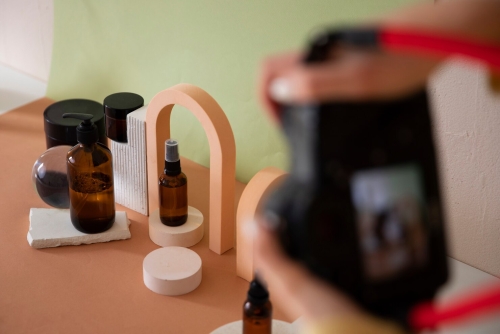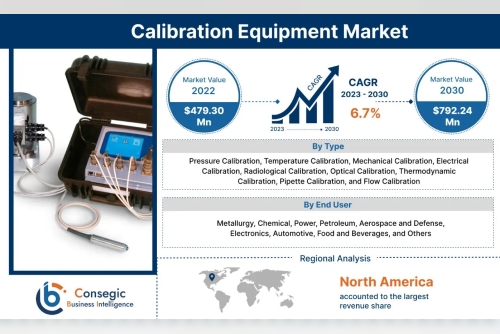Introduction
Mastering the art of product photography is crucial for entrepreneurs looking to thrive in the competitive landscape of e-commerce, particularly on platforms like Amazon. High-quality product images have the power to captivate potential customers, build trust, and ultimately drive sales. In this comprehensive guide, we will delve into the essential strategies and techniques for entrepreneurs to elevate their Amazon product photography game. From understanding the significance of quality images to setting up a DIY photography studio, mastering lighting techniques, and optimizing images for Amazon listings, this guide is designed to equip entrepreneurs with the knowledge and skills needed to create compelling product visuals that resonate with online shoppers.
Understanding the Importance of Quality Product Photography on Amazon
Let's face it: when it comes to shopping online, what you see is what you get. High-quality product images are the closest your customers can get to touching and feeling your products. They play a crucial role in capturing attention, conveying value, and ultimately driving sales.
The Impact of High-Quality Images on Sales
In a sea of online products, visually appealing images can make your listings stand out. Research shows that product listings with high-quality images receive more clicks, conversions, and fewer returns. Investing in top-notch photography can directly impact your bottom line.
Building Trust and Credibility with Professional Product Photography
Professional product photography not only showcases your products in the best light but also builds trust with your customers. Clear, well-lit images instill confidence in the quality of your products and convey a sense of professionalism that can set you apart in a crowded marketplace.
Essential Equipment and Tools for Product Photography
When it comes to product photography, having the right tools can make all the difference. From cameras to lighting equipment, here's what you need to set up a successful product photography studio.
Choosing the Right Camera for Product Photography
Your camera is your most essential tool for capturing stunning product images. Whether you prefer a DSLR, mirrorless, or even a smartphone with a great camera, choose a device that allows you to control settings like aperture, shutter speed, and ISO for optimal results.
Must-Have Accessories for Product Photography
In addition to a camera, investing in accessories like tripods, reflectors, and diffusers can elevate your product photography game. These tools help stabilize your shots, control lighting and enhance the overall quality of your images.
Setting Up a DIY Product Photography Studio
Who says you need a fancy studio to take professional product photos? With a bit of creativity and resourcefulness, you can create a budget-friendly setup that produces impressive results right in the comfort of your own space.
Selecting the Ideal Location for Your Studio
Whether it's a corner in your living room or a dedicated home office, choosing the right location for your DIY studio is key. Look for a space with good natural light, minimal distractions, and enough room to set up your equipment and props.
Creating a Budget-Friendly Studio Setup
You don't need to break the bank to set up a functional photography studio. DIY solutions like using white poster boards as backdrops, makeshift light reflectors, and household items for props can help you achieve professional-looking results without splurging on expensive equipment.
Mastering Lighting Techniques for Captivating Product Images
Lighting is the secret sauce behind stunning product photography. Understanding how light interacts with your products and mastering different lighting setups can elevate your images from mediocre to mesmerizing.
Understanding the Role of Lighting in Product Photography
Lighting isn't just about brightness—it's about creating mood, highlighting details, and shaping the overall look of your images. Whether you prefer natural light, artificial light, or a combination of both, knowing how to harness light effectively is essential for capturing captivating product photos.
Exploring Different Lighting Setups for Various Products
Different products require different lighting setups to showcase their unique features. From soft, diffused light for delicate jewelry to dramatic, directional light for textured products, experimenting with various lighting techniques can help you find the perfect setup for each type of product you photograph.
Composition and Styling Tips for Effective Product Photography
Composition Techniques to Showcase Products Effectively
When it comes to product photography, composition is key. Make sure your product is the star of the show by using techniques like the rule of thirds or leading lines to draw the viewer's eye to the item. Experiment with different angles and perspectives to highlight unique features and make your product stand out.
Styling Tips to Enhance Product Appeal and Visual Interest
Styling plays a crucial role in making your product look its best. Pay attention to details like lighting, props, and backgrounds to create a cohesive and visually appealing image. Use props sparingly to complement your product without overwhelming it, and choose backgrounds that enhance the item without distracting from it. Additionally, consider creating visuals that align with Instagram Reels dimensions for social media marketing, maximizing the reach of your product images.
Editing and Post-Processing Strategies for Amazon-Ready Images
Introduction to Image Editing Software for Product Photography
To create professional-looking product images, mastering image editing software is essential. Popular tools like Adobe Photoshop or Lightroom offer a wide range of features to enhance and retouch your photos. Familiarize yourself with basic editing techniques like adjusting brightness and contrast, removing imperfections, and cropping for a polished finish.
Step-by-Step Process for Polishing Product Images
After capturing your product photos, the editing process can take your images to the next level. Start by correcting any exposure or color issues, then focus on sharpening details and removing distractions. Consider using tools like the clone stamp or healing brush to clean up backgrounds and ensure your product is the focal point of the image. To create a consistent and professional look, consider using editing tools for background colour change to enhance your product’s appeal.
Best Practices for Optimizing Product Images on Amazon Listings
Understanding Amazon's Image Requirements and Guidelines
Before uploading your product images to Amazon, familiarize yourself with the platform's image requirements to ensure compliance. Aim for high-quality images with accurate colors and clear details to showcase your product effectively. Follow Amazon's guidelines regarding image size, resolution, and file formats for optimal display on your listings.
Tips for A/B Testing and Optimizing Product Images for Conversion Rates
To maximize the impact of your product images on Amazon, consider A/B testing different variations to see which images drive better conversion rates. Experiment with different angles, backgrounds, or styling choices to find the most compelling visuals for your target audience. Incorporating AI product photography tools can streamline this process, ensuring your images are consistently optimized for conversions.
Closing Thoughts
Effective product photography is not just about showcasing a product; it's about telling a story, evoking emotions, and ultimately persuading customers to make a purchase decision. By implementing the insights and techniques shared in this guide, entrepreneurs can level up their product photography skills and create visually stunning images that stand out on Amazon. Remember, investing time and effort into mastering product photography is an investment in the success of your e-commerce business. With practice and dedication, you can establish a strong visual brand presence and drive greater engagement and conversions on the highly competitive Amazon marketplace.












